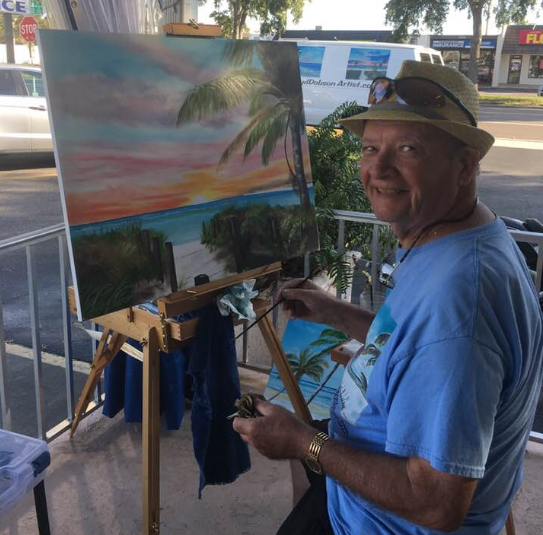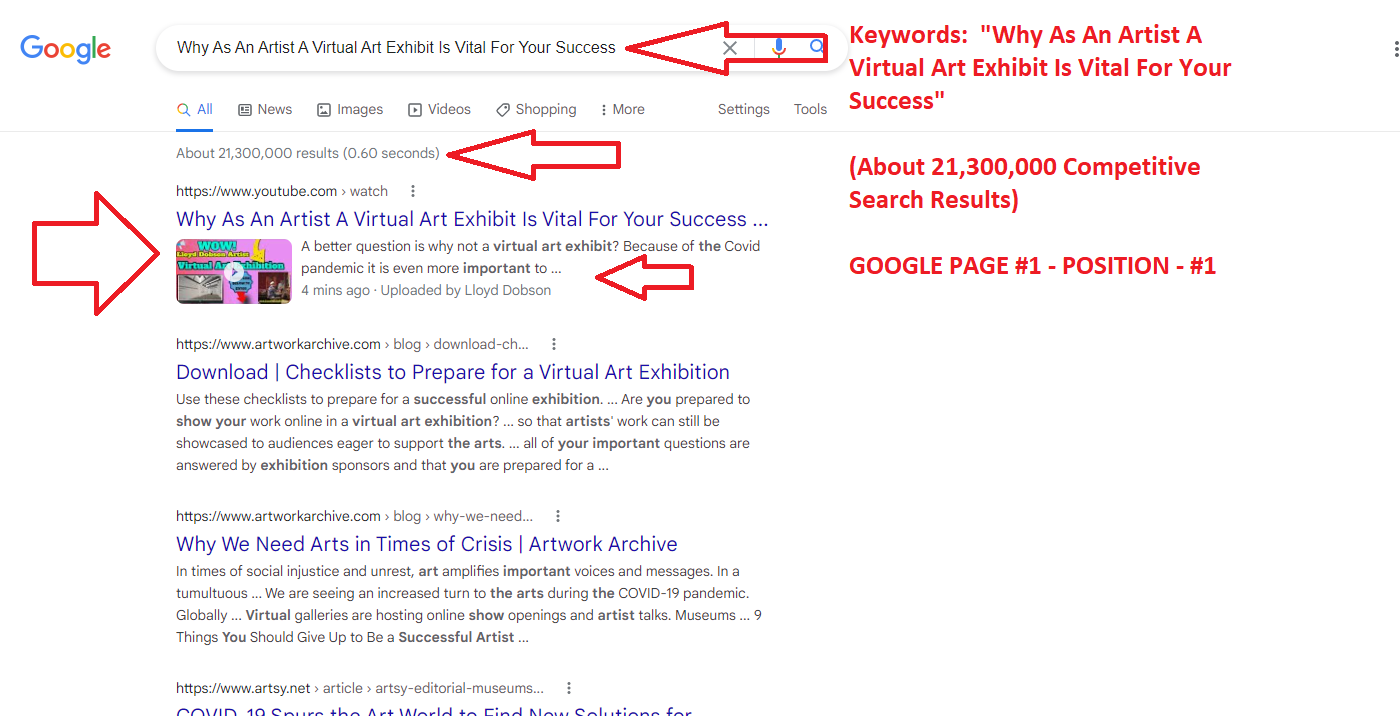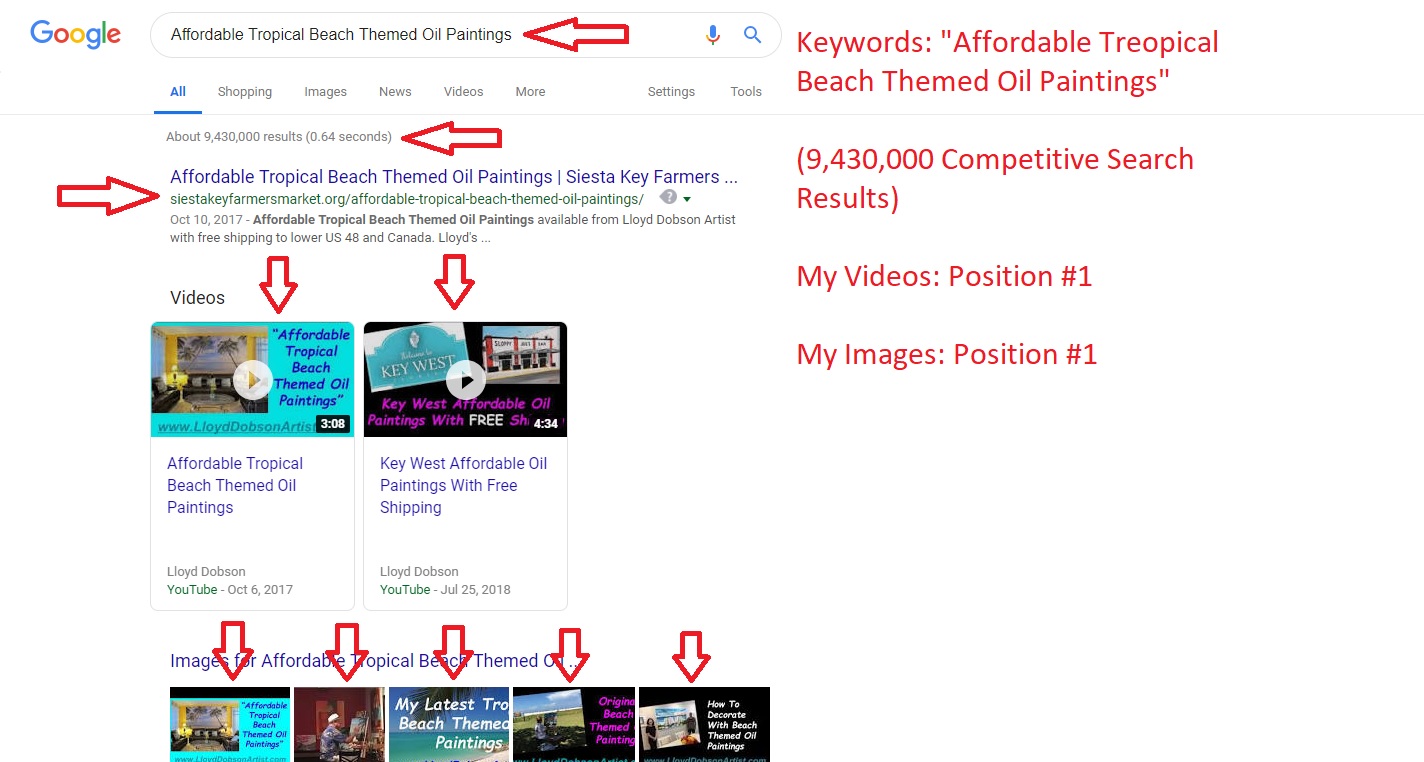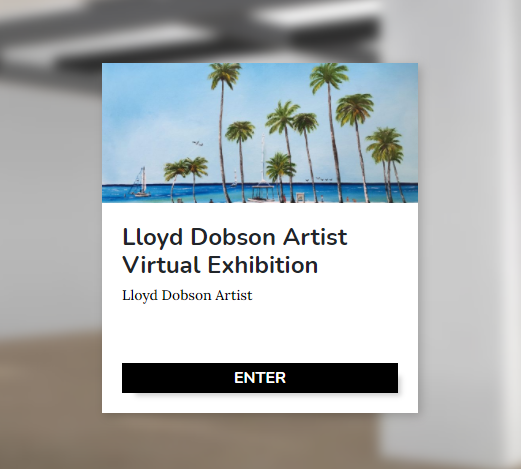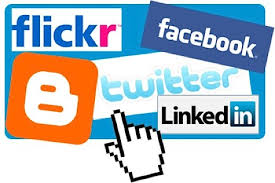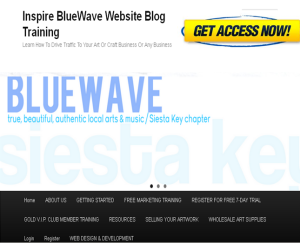Category: How To Sell Art
Gulf Coast Artists vs. Etsy – Which is Better for Marketing Your Art
Gulf Coast Artists vs. Etsy – Which is Better for Marketing Your Art?
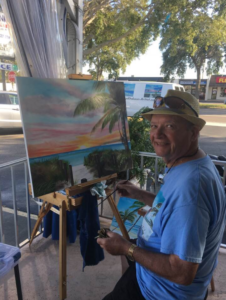 As an artist, you want to showcase your work and make a profit from it. However, with so many platforms available for selling art online, it can be challenging to determine which one will give you the best return on investment. In this blog post, we’ll explore Gulf Coast Artists versus Etsy and help you decide which platform is better suited for marketing your art.
As an artist, you want to showcase your work and make a profit from it. However, with so many platforms available for selling art online, it can be challenging to determine which one will give you the best return on investment. In this blog post, we’ll explore Gulf Coast Artists versus Etsy and help you decide which platform is better suited for marketing your art.
* Introduction to Gulf Coast Artists vs. Etsy
 Regardless of whether you choose Gulf Coast Artists or Etsy (or another platform), there are some essential tips for marketing your art online. First and foremost, make sure that your profile and product descriptions are well-written and visually appealing. Use high-quality images to showcase your work, and include detailed information about materials, dimensions, and pricing.
Regardless of whether you choose Gulf Coast Artists or Etsy (or another platform), there are some essential tips for marketing your art online. First and foremost, make sure that your profile and product descriptions are well-written and visually appealing. Use high-quality images to showcase your work, and include detailed information about materials, dimensions, and pricing.How To Drive Traffic To Your Art or Business Using Dobson Video Marketing Agency.
How To Drive Traffic To Your Art or Business Using Dobson Video Marketing Agency.
 From Zero to Hero: How Dobson Video Marketing Agency Can Transform Your Art or Business.
From Zero to Hero: How Dobson Video Marketing Agency Can Transform Your Art or Business.
If you’re an artist, entrepreneur, or business owner looking for a way to drive traffic and increase exposure, look no further than video marketing. According to recent studies, 87% of online marketers use video content as part of their strategy, and with good reason – it works!
But creating high-quality videos that capture the attention of your target audience can be challenging, especially if you don’t have any experience in filmmaking or video production. That’s where Dobson Video Marketing Agency comes in.
Here is an example of Google Page #1 Results!
The Power of Video Marketing for Artists and Businesses
One of the biggest advantages of using video marketing for your art or business is its ability to engage and captivate viewers like no other medium. Unlike text or images, which require active reading and interpretation, videos are passive and easy to consume.
This means that even people who aren’t interested in your product or service may stumble upon your video by accident and become intrigued enough to stick around. And once they do, there’s a good chance they’ll share your video on social media or leave a comment expressing interest.
How to Create Compelling Videos that Drive Traffic
So how exactly does one go about creating compelling videos? The first step is to identify your target audience and understand what motivates them to take action. Are they more likely to respond to emotional appeals or practical ones? What kind of language do they speak?
Once you have this information, you can start brainstorming ideas for your video. It could be anything from a short documentary showcasing your work to a humorous skit highlighting the benefits of your products or services.
Once you have a rough idea of what you want to say, it’s time to develop a script. Keep it concise and focused, and make sure every line serves a purpose. You should also consider incorporating visual elements such as graphics, animations, or music to add depth and dimension to your message.
Optimizing Your Videos for Search Engines
Another key aspect of successful video marketing is optimizing your videos for search engines. By including relevant keywords in your titles, descriptions, and tags, you can improve your chances of appearing at the top of Google searches. This will not only drive more traffic to your website but also attract potential customers who are actively searching for solutions related to your industry.
Leveraging Social Media to Promote Your Videos
Finally, once your video is complete, it’s essential to promote it across various social media platforms. Share it on Facebook, Twitter, Instagram, LinkedIn, and any other channels where your target audience might be hanging out. Encourage your followers to share it with their networks, and consider running paid advertising campaigns to reach new audiences.
Measuring the Success of Your Video Marketing Campaigns
To determine whether your video marketing efforts are paying off, you’ll need to track metrics such as views, clicks, shares, and conversions. YouTube provides detailed analytics that allow you to monitor these metrics over time, so you can adjust your approach accordingly. For example, if you notice that certain types of videos perform better than others, you can focus on producing similar content moving forward.
We are YOUR solution – We will create one FREE YouTube Video to show you results.
Get your free video that will rank you on Google Page #1. Send an email to support@dobsonvideomarketingagency.com for more information.
Please provide the following details:
1) Your Name and Email Address
2) Please provide the website or Facebook page link.
Please allow us 4 to 5 business days for the completion of your request.
Let us help you achieve your video marketing goals so that you can focus on creating the best content possible.
Conclusion
At the end of the day, video marketing isn’t just about driving traffic; it’s about building relationships with your audience and establishing yourself as an authority within your field. And when done right, it can transform your art or business into something truly remarkable. So why wait? Contact Dobson Video Marketing Agency today and see how they can help you achieve your goals.
GO HERE NOW FOR ADDITIONAL INFORMATION OR CLICK THE IMAGE BELOW
How To Become An Affiliate Selling Oil Paintings While Sitting On The Beach
 How To Become An Affiliate Selling Oil Paintings While Sitting On The Beach? Art affiliate programs are on the rise.
How To Become An Affiliate Selling Oil Paintings While Sitting On The Beach? Art affiliate programs are on the rise.
Join the Lloyd Dobson Artist “Sales Team” as an “Affiliate” and start earning money today. Earn 25% commissions on all paintings you sell. I offer FREE shipping to the USA.
My paintings hang in hundreds of private collections throughout the USA, Canada, the UK, Germany, Slovakia, New Zealand, and Switzerland. Testimonials with 5 Star Google Reviews
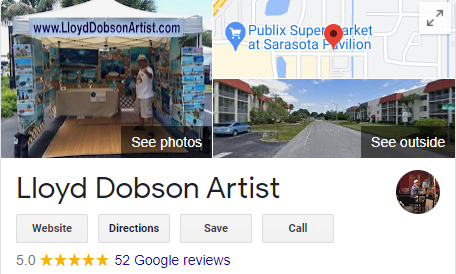
London-based art research groups estimate that the online art and collectibles market will see an annual growth rate of 19 percent for each of the next four years with profits increasing from approximately $1.57 billion to $3.76 billion.
If you can copy & paste, you can do this. Your affiliate link sends the client to my website gallery of available paintings and pricing. Once the sale is generated you are notified you made a sale and then you collect your commission as per the terms and conditions.
ALL COMMISSIONS PAID TO YOUR PAYPAL ACCOUNT THE 1ST DAY OF THE MONTH FOR SALES MADE THE PREVIOUS
Here are examples of the 25% commissions you can start earning today:
1) 5″ x 7″ – Retail $60 = $15.00 Commission
2) 8″ x 10″ – Retail $95 to $130 = $23.75 to $32.50 Commission
3) 9″ x 12″ – Retail $135 to $150 = $33.75 to $37.50 Commission
4) 11″ x 14″ – Retail $140 to $175 = $35.00 to $43.75 Commission
5) 16″ x 20″ – Retail $250 to $325 = $62.50 to $81.25 Commission
6) 18″ x 24″ – Retail $350 = $87.50 Commission
7) 24″ x 30″ – Retail $490 = $122.50 Commission
8) 24″ x 36″ – Retail $690 = $172.50 Commission
9) 28″x 38″ to 34″ x 40″ – Retail $790 to $1190 = $197.50 to $297.50
Why Virtual Art Exhibit For Your Success
 Why As An Artist A Virtual Art Exhibit Is Vital For Your Success? A better question is why not a virtual art exhibit? Because of the Covid pandemic it is even more important to understand how to market your art online.
Why As An Artist A Virtual Art Exhibit Is Vital For Your Success? A better question is why not a virtual art exhibit? Because of the Covid pandemic it is even more important to understand how to market your art online.
In mid March 2020 our art world was turned upside down with the lockdowns. Thousands upon thousands of artist thought they would be participants in the art industry thought they would continue spending the year at many gallery openings, institutional programs, and outdoor art events.
This is when I realized that I needed to step up my game with online marketing. There were many people sharing that people won’t buy art online. This is such a fallacy. My paintings hang in private collections throughout the USA, Canada, Germany, the United Kingdom, Slovakia, New Zealand, and Switzerland.
SEO became a large part of my marketing strategy. Early in April of this year 2021, ArtPlacer offered an opportunity to create a “Virtual Art Exhibition” and I jumped all over it. Now along with the other Google Page #1 rankings my current clients and future clients have the opportunity to visit my online exhibition that is global.
SEO and the social media platforms have always been a large part of my marketing strategies, however now it was even more important that I have a large presence on the web.
Here are a couple of hundreds of keywords Lloyd Dobson Artist ranks for
While necessity is often the mother of invention, panic is often the father of hasty mistakes. Thankfully, ArtPlacer understands the need to stay current with the digital world. Owning your digital real estate is a critical part of being successful. Traffic + Buyers = Staying In Business!

Everyone possesses a smart phone and uses it to “GOOGLE SEARCH” yes even art. This is why Google Page #1 is important.
What is a virtual art exhibition?
ArtPlacer virtual exhibition software allows me to show my beach themed oil paintings not only simply on my website at www.LloydDobsonArtist.com but with a beautiful virtual museum of sorts, where my viewers can enjoy the full experience of a real gallery and my paintings.
Are you prepared to show your work online in a virtual art exhibition?
In the wake of COVID-19, galleries and artists are determined to live out the phrase “the show must go on.” Because our health comes first and social distancing seems to be the new norm, exhibitions are now being presented virtually.
So that artists’ work can still be showcased to audiences eager to support the arts. Again thank you ArtPlacer for your software and understanding that we as artist must adapt to the digital era.
For additional information and tips on today’s marketing strategies, go to www.LloydDobsonAuthor.com Have an awesome beautiful beachy kind of blessed day in your heart and attitude ALWAYS! 🌴🌴 🙂
Get Google Page #1 for ArtFinder and Your Art

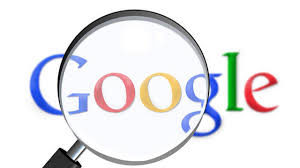
 Get Google Page #1 for ArtFinder and Your Art secrets. Having a good Page Rank in the eyes of Google can do wonders for your website. Of course it is not vital, but a good Google Page Ranking will gain you more visitors and trust.
Get Google Page #1 for ArtFinder and Your Art secrets. Having a good Page Rank in the eyes of Google can do wonders for your website. Of course it is not vital, but a good Google Page Ranking will gain you more visitors and trust.
You may be thinking, why is Google so important to my website? Why not Bing, Yahoo etc? The truth is most people still use Google as their number one search engine. They have established themselves as the biggest player. In years to come who knows what will happen, but for now Google remains king of the search engines.
Does ranking matter to your website?
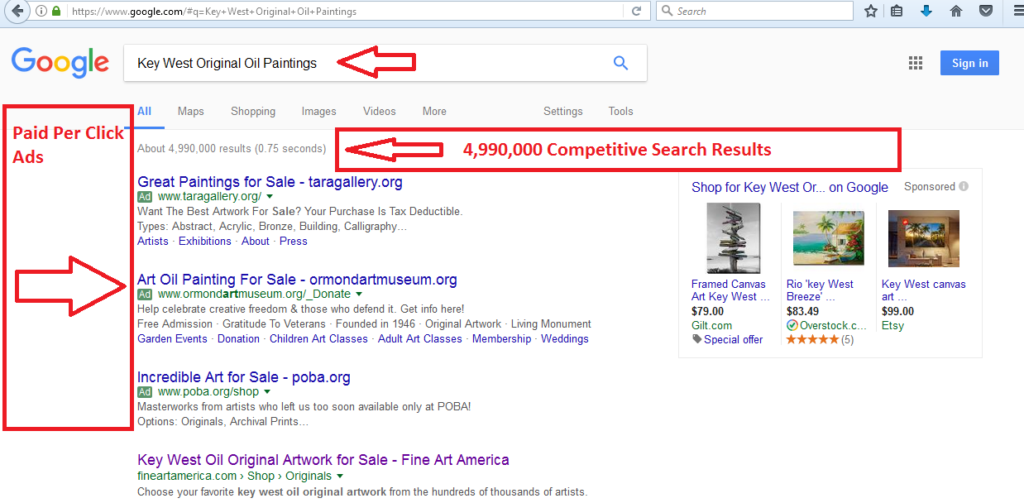
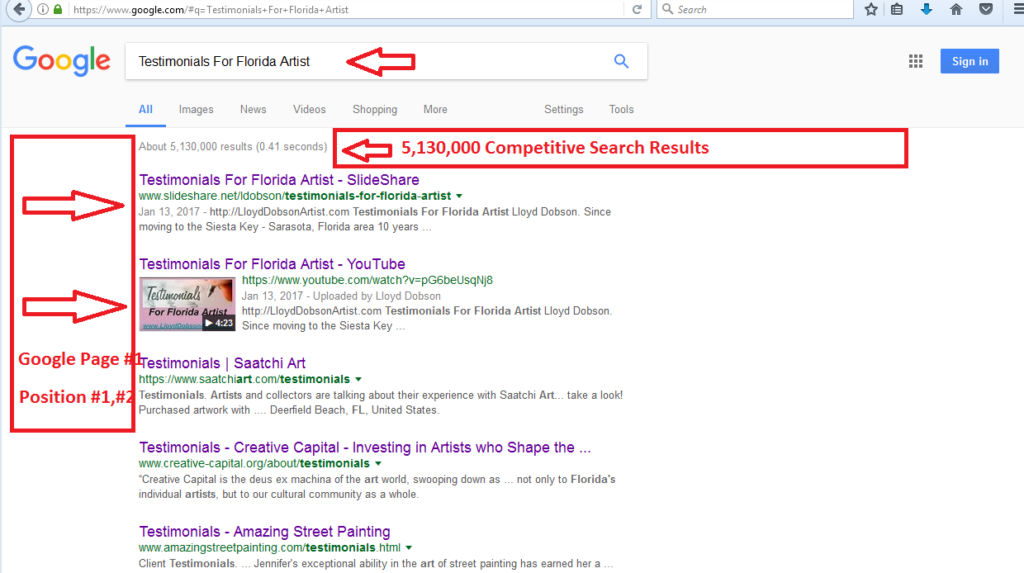
If you want to get lots of traffic and have your site positioned high up in the search results then yes, Page Ranking does matter. Think about it! Who is going to trawl through page 1-40 (or more) of the search results? Nobody has the time for that.
If your site does not show on page 1 or 2 of the search results then it 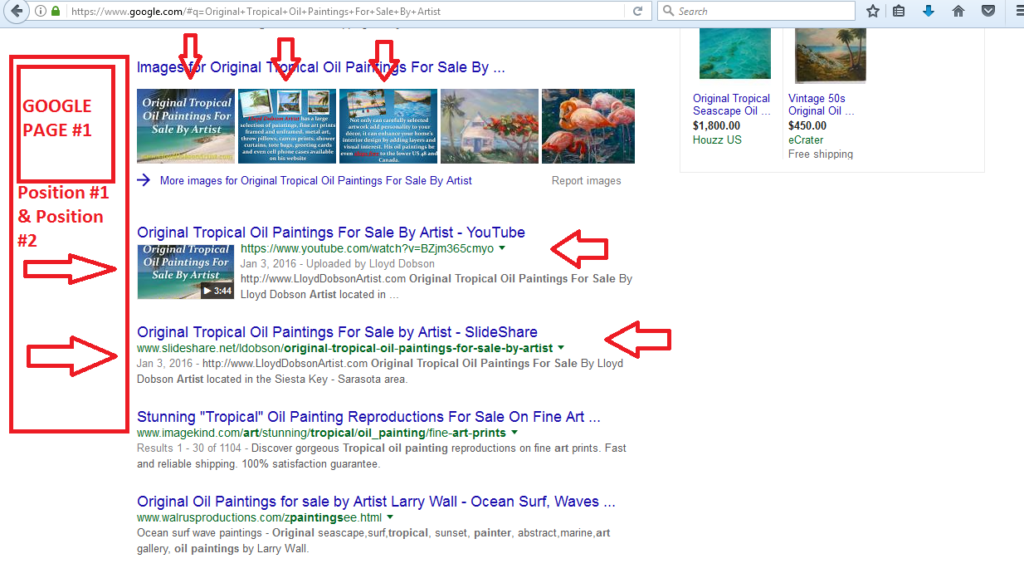 is very difficult to get anyone to see your site, let alone buy any products you may be offering. The better your Page Ranking the higher you are going to be showing in the search results.
is very difficult to get anyone to see your site, let alone buy any products you may be offering. The better your Page Ranking the higher you are going to be showing in the search results.
So you can see that having a decent Page Ranking does indeed matter.
How is Page Rank determined?
To receive tips on improving your Google page ranking and how your page ranking is determined go to
http://marketingtrafficsecrets.com/google-page-1-ranking/
IF YOU LEARNED SOMETHING TO HELP YOU, PLEASE SHARE , POST A COMMENT AND SUBSCRIBE TO MY NEWSLETTER.
The Secrets To Surviving As An Artist
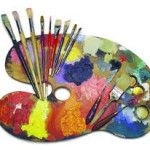

The Secrets To Surviving As An Artist. This article started with me being ask consistently at my art show events, “How do I survive as an artist?” . Well first let me share a very fundamental for succeeding in any business. It does not matter if you have a clothing boutique, restaurant or art business there are only two things ANY business needs to survive. They need TRAFFIC and CONVERSIONS (Buyers). PERIOD!
Without both of those ingredients failure is on the near horizon. All the major aspects of what being an artist in this day and age is about, and to combine them into one unified approach is what I want to share with you. Knowing how to market your art is critical. The equation for success is KNOWLEDGE + ACTION + A POSITIVE ATTITUDE = SUCCESS!
Now of course your art comes first, we all know that, but this is not about what to make or how to make it; that’s your business and yours alone. And your creative process– the magic that happens in the studio– that’s all you as well, and no one else. As I’m fond of saying, “What happens in the
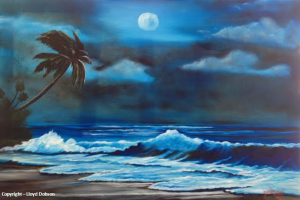
#110014 BUY $295
20×30 – Free Shipping (USA) Only
studio stays in the studio.” This is about what to do after you make your art, once it’s completed and ready to be presented to the public, in front the vast and fabulous art world and all those who populate it.
As an artist it is all about keeping people in the game, about making sure they understand what you’re up to at every step along the way– from first contact with your art 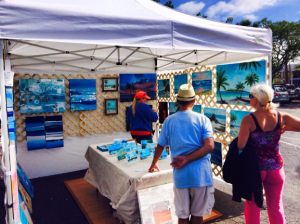 right on through to final purchase. The key is to make yourself accessible, available, and to welcome everyone to your art no matter what the circumstances. You want to make sure that everybody understands what you’re doing, what your purpose is and what you’re trying to communicate through your work. Doing that job well will definitely increase your chances of success.
right on through to final purchase. The key is to make yourself accessible, available, and to welcome everyone to your art no matter what the circumstances. You want to make sure that everybody understands what you’re doing, what your purpose is and what you’re trying to communicate through your work. Doing that job well will definitely increase your chances of success.
You can’t simply put your art out there, and then with little or no effort on your part, expect people to somehow get up to speed entirely on their own about its significance, figure out how to contact you, what to ask or what to say or how to say it, how to find out prices, and basically advance all the way to buying something without any assistance on your part.
Here are some big questions that you really have to think about anytime you present your art to the public– online, in person, at galleries, at art events or anywhere else. What’s it going to do for us? What makes it worth owning? Why should we hang it in our homes or offices and look at it everyday? How is it going to make our lives better?
These are not questions that people will come right out and ask you, but they are the kinds of questions that really matter when they like what they see and start thinking seriously about whether your art belongs in their lives. The more your answers resonate with them and the longer a positive interaction ensues, the greater the chances that you’re going to gain a fan, make a sale or accomplish something else good.
A couple of questions you want to answer during the course of any such interaction with your potential buyer, either explicitly or implicitly, are why you have chosen to become an artist and make art such a significant part of your life, but even more importantly why have you chosen to show your art in public, what the purpose of going public with your art is. What you have to say about your art– the story, the narrative, the mystery or romance of it all– this information is often as significant as the art itself, especially with contemporary art and contemporary artists.
Where do you market your art? How do you get the word out? This is your next responsibility. Now seeing as we live in the Internet age, there’s no better way to get that word out to the maximum number of people, like to everyone on the face of the planet, than to do it online, and the best place to do it is on your website.
The content and layout of your website are extremely important. It should be a place where anyone can go to see the best, most organized, most current, easiest to understand, easiest to navigate selection of your artwork anywhere.
In this age of instant gratification, people who visit your website typically have two basic questions: “Where am I and why am I here?” And they want to know now– like within about 30 seconds or a minute of landing on your home page. People have exceptionally short online attention spans these days, and if they can’t figure where they are fast, they’re usually gone in a flash.
Being a successful artist is not only about showing and selling and getting known; it’s about understanding your purpose, your calling, and about presenting yourself and your work with unwavering confidence and conviction about who you are and what your art stands for.
Subject matters and techniques, to continually evolve and advance in your practice, and to reach out to others in ever more creative ways— that is what it means to not only survive, but also to thrive and prosper as an artist. Impact someones life with your art in a meaningful way and not only might you make yourself a sale, but you will also endow the world with just a little tiny bit more good.
Original Art For Sale On eBay


 Original Art For Sale On eBay is one of the biggest market places on the Internet. There are millions of items being sold there everyday. As an artist you may be wondering how to sell original art on eBay and make money or even a living from it. If you are an artist looking to sell your art in as many places as possible then you have probably thought of trying to sell art on eBay.
Original Art For Sale On eBay is one of the biggest market places on the Internet. There are millions of items being sold there everyday. As an artist you may be wondering how to sell original art on eBay and make money or even a living from it. If you are an artist looking to sell your art in as many places as possible then you have probably thought of trying to sell art on eBay.
There are many things that are the same as selling offline. But many are different. Unlike the offline world, a potential buyer does not get to see your work in person. They do not see you in person. But that doesn’t mean that selling art online is harder. In some ways it is easier.
An art purchase is a very emotional buy. It is almost at the same level as buying a house or a car. Of course the potential buyer has to feel an emotional attachment to the piece if they are going to purchase it- this is not the place to create that. If a buyer is emotionally attached enough to the piece to buy it and then receives something that was not exactly as expected- your buyer will be unhappy and probably ask for their money back.
If not I guarantee they will not be buying any additional art pieces from you. You can’t risk this because someone who collects art is just that- a collector. Future purchases are highly probable. Make sure they know exactly what to expect.
Be completely descriptive about your art for sale. Make sure that you have stated all of the important information about the piece. Give the art buyer as much information as possible about the piece. This will reduce the amount of questions and help qualify the potential buyer.
These small but important facts will do a lot of the selling for you. Make sure to include price, medium, size, type of paper/ canvas, framed/ unframed, subject matter, and date. Don’t forget to include; your motivation for choosing this subject

matter, what it means to you, challenges when working on your art, and why you have chosen to express these ideas in this manner. This is where you create an emotional attachment. An art buyer becomes attached as they begin to feel they understand the piece and the artist behind it.
eBay is the most well known auction site in the world. On eBay, you can sell your framed and polished works at the price of your choice. You have the option of allowing buyers to bid on your work or buy it out at a set price.
So the first thing you need to do is to check out the competition. Find out what is selling on eBay by checking the sold listings, look at what prices paintings are selling for in your particular niche.
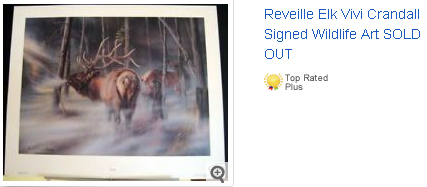
When you have checked out the competition and you know what kind of prices you can sell your work for you then need to come up with a good title and description for your listing. Make sure you include any positive selling points for your painting/artwork so that these are exploited to the full. For example if the painting is an original and one of a kind make the buyer fully aware of this and the fact that no-one else will have a duplicate of this painting.
Next thing you need to make sure of is that you have a great photograph of the artwork. It should be an accurate representation but should show it off in the best light. A good thing would be to have a picture of the artwork, for example above a sofa or a bed but in a setting that is suited to the painting.

Selling art on eBay is only one way of selling art online, there are several others. Learn How To Sell Art Online and get resources on how to market and promote your art by clicking the link. On my website there are additional marketing ideas for you. Plus if you want to buy your art supplies from 50% to 70% off retail there is a place for you on the site as well. Go to Lloyd Dobson Artist now.
Art Pricing – What Should I Price My Art?

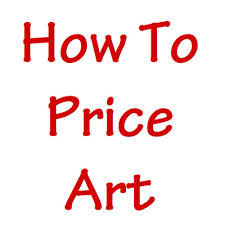 Art Pricing – What Should I Price My Art? This is a question that I am ask many times. In order to price your art realistically, you must understand and respect how the art business works and how collectors shop and buy. You must also objectively assess your art world accomplishments and determine how they position you in relation to all other artists. These are difficult tasks and not necessarily pleasant; but they’re absolutely essential to achieving the goals of making a go of it as an artist and of selling art.
Art Pricing – What Should I Price My Art? This is a question that I am ask many times. In order to price your art realistically, you must understand and respect how the art business works and how collectors shop and buy. You must also objectively assess your art world accomplishments and determine how they position you in relation to all other artists. These are difficult tasks and not necessarily pleasant; but they’re absolutely essential to achieving the goals of making a go of it as an artist and of selling art.
Understanding common mistakes that artists make when setting prices is the first step in this process. Perhaps the most significant error is the tendency to focus too much attention on only that segment of the art world that pertains to you and too little attention on the rest, or even worse, dismissing the rest as irrelevant. If you let this happen, your asking prices may make sense to you and to your inner circle, but make little sense to the overall art community.
Many artists make the mistake of equating dollar values with psychological factors like how emotionally attached they are to their art or how much angst they experience during the creative process. They place special meanings and, therefore, special asking prices on certain pieces of their work that may make sense to them inwardly, but have little or no relation to the selling prices of the rest of their art or to art prices in general. Dealers and collectors see these prices as inconsistent or excessively high.
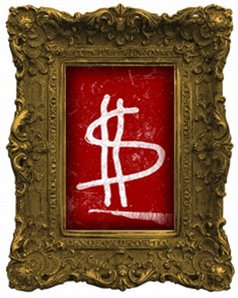
Don’t make the mistake of thinking that your art is so unique that nothing else compares to it. All art is unique. Every artist is unique. Uniqueness, however, has never been and never will be the sole criterion for setting prices at any particular level.
Collectors rarely see themselves as having only one choice when selecting art, no matter how “unique” that art happens to be. Not only are they cost-conscious, but they almost always compare work from artist to artist and gallery to gallery before they buy. The more comparing they do, the better they get at collecting, assessing quality, determining fairness in selling prices, and getting the best bangs for their bucks. This is what good collecting is all about and what you’re up against when it comes to pricing your art.
Here is a typical question: “I am thinking of having prints made of some of my watercolor paintings and selling them on sites like Etsy. I’m not sure how to go about having prints made, as far as making it profitable. Any suggestions?”
This is a great question. Pricing is really tough, but you can figure it out! Here are a few things to consider:
 1) Costs – You need to make back what you spent in making the art. This can include fixed costs like your office space, lighting, heating, etc. These costs must be spread out among the number of pieces you plan to sell on a monthly basis. For example, if your studio and rent together cost $1000 per month, and you plan on selling 10 prints per month, then you have $100 in costs for each print, before you ever count anything else. If you think you can sell 20 prints each month, then it’s only $50 per print.
1) Costs – You need to make back what you spent in making the art. This can include fixed costs like your office space, lighting, heating, etc. These costs must be spread out among the number of pieces you plan to sell on a monthly basis. For example, if your studio and rent together cost $1000 per month, and you plan on selling 10 prints per month, then you have $100 in costs for each print, before you ever count anything else. If you think you can sell 20 prints each month, then it’s only $50 per print.
Then there are your costs per painting, or variable costs. This includes your canvas, brushes, the paint you used, and the time you spent (yes, your time is a cost, unless you are working for free) and the cost of the prints. These will vary based on how much paint you use, how big the canvas is, etc. These will be calculated on an individual painting basis.
How much is your time worth? How much do you want to make? If you make $20 per hour, that’s about $40,000 per year. (Hint: You’re worth more than that.)
2) Goals – What are your painting goals? Are you trying to appear like you care what the art world thinks, or are you creating art for your buyers?
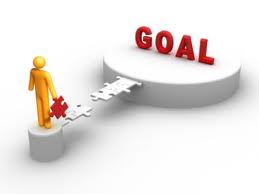 Also, how much money to you want to make? If your basic cost per painting is $50 for fixed costs plus $20 for materials, then you add the 10 hours that it took you to paint the piece, then that’s another $200. How many prints do you want to sell before you make that back? 20 prints? That’s $90 per print. (Then you sell the original for gobs of money.)
Also, how much money to you want to make? If your basic cost per painting is $50 for fixed costs plus $20 for materials, then you add the 10 hours that it took you to paint the piece, then that’s another $200. How many prints do you want to sell before you make that back? 20 prints? That’s $90 per print. (Then you sell the original for gobs of money.)
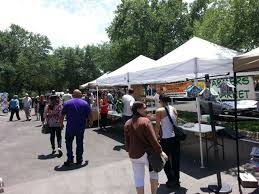 3) Research – After you know your costs and goals, find out how much it costs to buy other artists’ work. Not just any artists, but look at artists who work in similar styles to you. Look at watercolors that are for sale on Etsy and see what the high, middle, and low prices are. Where do your paintings fit in? Is your work more like the high end or low end of the pricing structure?
3) Research – After you know your costs and goals, find out how much it costs to buy other artists’ work. Not just any artists, but look at artists who work in similar styles to you. Look at watercolors that are for sale on Etsy and see what the high, middle, and low prices are. Where do your paintings fit in? Is your work more like the high end or low end of the pricing structure?
4) Test – Pricing is as much of an art as it is a science. There’s no right or wrong way to do it, as long as you are making money. Price out a few pieces at a few different levels and see which ones sell the most or which ones end up being the most profitable.
Remember that today’s collectors are more sophisticated than ever. The idea of falling in love with one piece of art and having to have it at any cost fell by the wayside years ago. Collectors now research and compare before they buy. The only ones who don’t are new to the game. Just in case you get lucky and find one who’s a little naive, by the way, resist the temptation to take advantage and overcharge. You risk the possibility of turning them off to continued collecting. We all know that we need all the art collectors we can get.
Lastly, have something for everyone. Offer art in all price ranges. People who like your work, but can’t afford the big stuff should at least have the opportunity to come away with something. These are your biggest fans, your collector base, the people who will stand by you throughout your career. Do whatever you can to provide them with art. That’s the best way to maximize your exposure, create good will, get yourself out there, jump start your sales, and become known and respected in the arts community.
WHOLESALE ART SUPPLIES AS HIGH AS 70% OFF RETAIL – CLICK ON BANNER BELOW AND COMPARE PRICES
